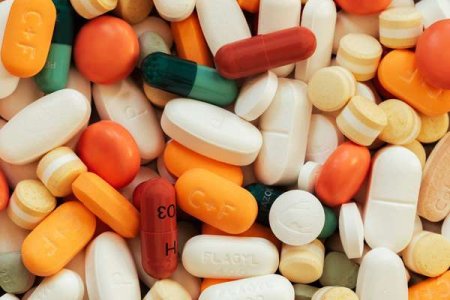Can’t Find Your Meds? The Prescription Shortage Crisis Continues!
By
Aubrey Razon
- Replies 0
In the labyrinth of America's healthcare system, the prescription drug shortage is a recurring nightmare that seems to have no end.
Last year's headlines may have faded, but the problem persists. It's a distressing reality that can disrupt treatment plans and compromise health outcomes. So, what's behind these persistent shortages, and what can be done to ensure that the medications you depend on are there when you need them?
Robin Finley, a retired high school English teacher and uterine cancer patient, is in a state of uncertainty and fear. The drug that was part of her lifeline, carboplatin, vanished from the shelves, forcing her to switch to a harsher alternative, cisplatin, with more severe side effects.
This is not an isolated incident but a symptom of a systemic issue that continues to affect countless Americans, particularly those in their golden years who rely heavily on medications.
Forty years ago, the Hatch-Waxman Act was heralded as a game-changer, making generic drugs widely accessible and affordable. However, the very success of this legislation has contributed to the current predicament.
The act spurred competition and lowered prices, but it also led to a market where drugs are manufactured at minimal costs, leaving little room for error or disruption.
Today, generic drugs represent about 90% of all prescriptions filled, but they account for a mere fraction of pharmaceutical spending.
This razor-thin margin means that any hiccup in production can lead to a shortage. And with many manufacturing facilities located overseas, particularly in India and China, the supply chain is vulnerable to geopolitical tensions, natural disasters, and quality control issues.
The American Society of Health-System Pharmacists reports that shortages have affected at least 300 drugs at a time over the last 18 months.
For cancer patients, the impact is particularly acute.
A survey by the American Cancer Society's Cancer Action Network found that 10% of cancer patients experienced care disruptions due to shortages, with many facing treatment delays and difficulties finding substitute medications.
Healthcare providers, like Dr. Kari Wisinski, an oncologist with UW Health, have had to scramble for alternatives, sometimes with no easy substitutes available. This not only affects patient care but also diverts resources from other critical healthcare services.
The complex web of group purchasing organizations (GPOs) and pharmacy benefit managers (PBMs) has come under scrutiny for their role in driving down prices to unsustainable levels.
These middlemen negotiate fixed-price agreements and determine which drugs are covered by insurance plans, often leading to manufacturers discontinuing unprofitable drugs or forgoing necessary facility upgrades.
The White House and Congress have taken steps to address the shortages, with proposals to incentivize manufacturers to maintain a reliable supply of high-quality drugs and to increase transparency in the system.
President Biden has also announced investments in domestic manufacturing of essential medicines.
However, solutions must go beyond managing the current crisis. It's crucial to create an economic model that values resiliency in the manufacturing system, ensuring that drugs are not only affordable but also reliably available.
For individuals like Robin Finley, the drug shortage is more than a policy issue; it's a matter of life and death. Despite her love for teaching and her passions, such as biking, the shortage has brought an unwelcome focus on the fragility of her health and the healthcare system that supports it.

Have you or a loved one been affected by prescription drug shortages? What solutions do you think could help prevent these shortages in the future? Share your stories and ideas in the comments below.
Last year's headlines may have faded, but the problem persists. It's a distressing reality that can disrupt treatment plans and compromise health outcomes. So, what's behind these persistent shortages, and what can be done to ensure that the medications you depend on are there when you need them?
Robin Finley, a retired high school English teacher and uterine cancer patient, is in a state of uncertainty and fear. The drug that was part of her lifeline, carboplatin, vanished from the shelves, forcing her to switch to a harsher alternative, cisplatin, with more severe side effects.
This is not an isolated incident but a symptom of a systemic issue that continues to affect countless Americans, particularly those in their golden years who rely heavily on medications.
The Hatch-Waxman Act's Unintended Consequences
Forty years ago, the Hatch-Waxman Act was heralded as a game-changer, making generic drugs widely accessible and affordable. However, the very success of this legislation has contributed to the current predicament.
The act spurred competition and lowered prices, but it also led to a market where drugs are manufactured at minimal costs, leaving little room for error or disruption.
Today, generic drugs represent about 90% of all prescriptions filled, but they account for a mere fraction of pharmaceutical spending.
This razor-thin margin means that any hiccup in production can lead to a shortage. And with many manufacturing facilities located overseas, particularly in India and China, the supply chain is vulnerable to geopolitical tensions, natural disasters, and quality control issues.
The Impact on Patients and Healthcare Providers
The American Society of Health-System Pharmacists reports that shortages have affected at least 300 drugs at a time over the last 18 months.
For cancer patients, the impact is particularly acute.
A survey by the American Cancer Society's Cancer Action Network found that 10% of cancer patients experienced care disruptions due to shortages, with many facing treatment delays and difficulties finding substitute medications.
Healthcare providers, like Dr. Kari Wisinski, an oncologist with UW Health, have had to scramble for alternatives, sometimes with no easy substitutes available. This not only affects patient care but also diverts resources from other critical healthcare services.
The Role of Middlemen and Market Dynamics
The complex web of group purchasing organizations (GPOs) and pharmacy benefit managers (PBMs) has come under scrutiny for their role in driving down prices to unsustainable levels.
These middlemen negotiate fixed-price agreements and determine which drugs are covered by insurance plans, often leading to manufacturers discontinuing unprofitable drugs or forgoing necessary facility upgrades.
Legislative Efforts and the Path Forward
The White House and Congress have taken steps to address the shortages, with proposals to incentivize manufacturers to maintain a reliable supply of high-quality drugs and to increase transparency in the system.
President Biden has also announced investments in domestic manufacturing of essential medicines.
However, solutions must go beyond managing the current crisis. It's crucial to create an economic model that values resiliency in the manufacturing system, ensuring that drugs are not only affordable but also reliably available.
For individuals like Robin Finley, the drug shortage is more than a policy issue; it's a matter of life and death. Despite her love for teaching and her passions, such as biking, the shortage has brought an unwelcome focus on the fragility of her health and the healthcare system that supports it.
Key Takeaways
- Prescription drug shortages in the U.S. continue to be a problem, affecting critical medications such as chemotherapy drugs.
- The issue of drug shortages is attributed partly to low prices due to the Hatch-Waxman Act, which has led to low-cost margins for manufacturers and a lack of incentive to produce generic drugs.
- The White House and Congress are exploring measures to address the shortages, though progress has been hindered by the complexities of the market and economic pressures.
- Experts suggest that solutions may include creating a buffer inventory, encouraging domestic manufacturing, increasing transparency in the supply chain, and addressing the role of middlemen such as PBMs and GPOs in controlling drug prices and availability.
Have you or a loved one been affected by prescription drug shortages? What solutions do you think could help prevent these shortages in the future? Share your stories and ideas in the comments below.







